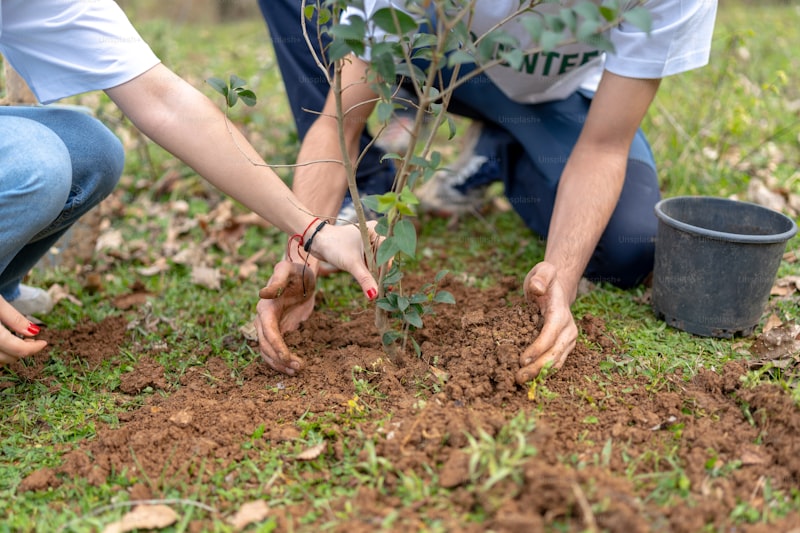As yogis, we are taking into account the notion of ‘Ahimsa’, or compassion for all living things. From here, we can start looking at our own consumption patterns. How might we make a more positive contribution to our earth? Here nutritionist and yogi Elisa Pineda explores a more conscious way of eating.
Why We Need A Change For Our Earth
Climate change is a reality. According to more than eighteen scientific societies, it’s evident that climate change is a fact. Research demonstrates that the greenhouse gases emitted by human activities are the primary driver. One of those human activities that greatly contributes to climate change is food production.
Due to polluting methods and high food demand food systems have become a great environment threat. Deforestation and waste is also a problem. Eating sustainably is essential to maintain our ecosystems. It has also become indispensable for a healthy diet.
Through your choices you have the possibility to shape our earth for the better or worse. Some of the things that you can change are:
1) Avoiding food waste
2) Being critical about food marketing
3) Keeping your consumption of packaged food low
4) Keeping your consumption of meat products low
5) Going local
1. Avoid Food Waste
More awareness has been brought to this issue lately. Food waste affects all of us. According to the WRAP: The Food We Waste report, the UK average household wastes 6.7 million tonnes of food every year. Most of it ends up in landfills. This contributes to methane production. Methane is a powerful greenhouse gas and contributor to climate change. Food waste also affects your pocket. Interestingly, single occupancy households generate an estimated food waste cost of £1,942 every year in England.
Simple Changes You Can Make
It is important to highlight here that the great majority of this food waste is avoidable. Here are some e small changes you can make to decrease food waste production:
- Vegetable peels are a common element in food waste bins. They contain lots of nutrients. Scrubbing your veggies instead of peeling them can reduce your food waste and increase your nutrient intake.
-Tea bags are another big component of our food waste. This can be reduced considerably by using re-usable tea strainers, such as those made with stainless steel.
-Is your expiry date telling you the truth? A lot of food is in a perfect state even post expiry date. Use your own senses to assess your food before you decide to get rid of it.
-Using leftovers. Before you go out for dinner or do more food shopping, check your leftovers. Sometimes we need just a little creativity to mix those ingredients together. You can end up with wonderful meals!
A great example is the Hare Krishna community. They offer free vegetarian curries and meals London’s SOAS University. Meals are freshly prepared from supermarket donations.
2.Think Before You Buy
Food marketing wants to make you buy products that appear to be healthy. These products are more often than not equivalent to what you pay for. Eg, organic doesn’t always equal healthy and sustainable.
Organic farming is not always best for the environment. This type of farming usually requires greater extension of land. More machinery is used as well. Some organic techniques can improve the efficiency of fertiliser use. Previous studies undertaken in the UK indicate that there is little or no evidence for organic products having additional nutritional benefit.
There may be a reduction in greenhouse gas production (GHG) due to the ban on chemical fertilisers. Yet more land and machinery is employed so GHG productions ends up being similar to intensive agriculture.
At least they’re safer, right? Well actually, some of the permitted ‘organic’ fertilisers can also be toxic. Examples of such are copper sulphate and slaked lime. They can both cause toxicity to soil when used frequently.
So, what can we do? As food author Michael Pollan says eat plants (including whole grains), animals, and fungi as lightly processed as you can find them. In the end it is your call; eating organic is a personal decision.
Buy products that are sustainable for the earth. Such food products would exclude those that depend on deforestation. According to the UNFood and Agriculture Organization (FAO), 40% of lands that were once forests have now been compromised by agriculture.
3. Go Low On The Plastic
Food today comes in all kinds of colourful packaging to catch our attention. We produce more than 300 million tonnes of plastics a year. 40% of this ends up in landfills, and up to 20 million tonnes reach the oceans. It disrupts animal endocrine systems. It can also alter reproduction patterns and cause cancer. The damage to marine ecosystems is estimated to be around $13 billion a year.
How to reduce the plastic you use?
- Select food items that use the minimum amount of packaging possible.
- Choose unwrapped produce instead of ultra-wrapped choices.
- Opt for meat straight from the deli counter or butcher.
- Avoid excess packaging such as polystyrene / Styrofoam. It is a suspected carcinogen that creates hazardous waste and greenhouse gases.
4. Reduce Your Intake of Meat and Related Products
Meat and dairy production are two of the highest producers of methane and CO2 globally. According to the 2013 United Nations report, livestock is responsible for 14.5% of human-induced greenhouse gas emissions. You can help reduce gas emissions by going low on dairy products and eating vegetables. Replacing meat products with vegetable protein can also help.
5. Go Local, Buy In Season
A great way to reduce the production of CO2 that can lead to global warming is to consume foods grown locally.
Eating sustainably is a necessity to protect the earth and improve your quality of life and health.
Reducing the amount of food that you buy that comes with unnecessary packaging is relatively easy. So is eating less meat and more vegetables and non-meat protein sources.
Every time we buy something it is like giving a vote for it to continue being produced. As a consumer you can play a key role in saving the earth from climate change.
Calculate your own carbon foot print with the many apps available, such as the one created by Oroeco:













